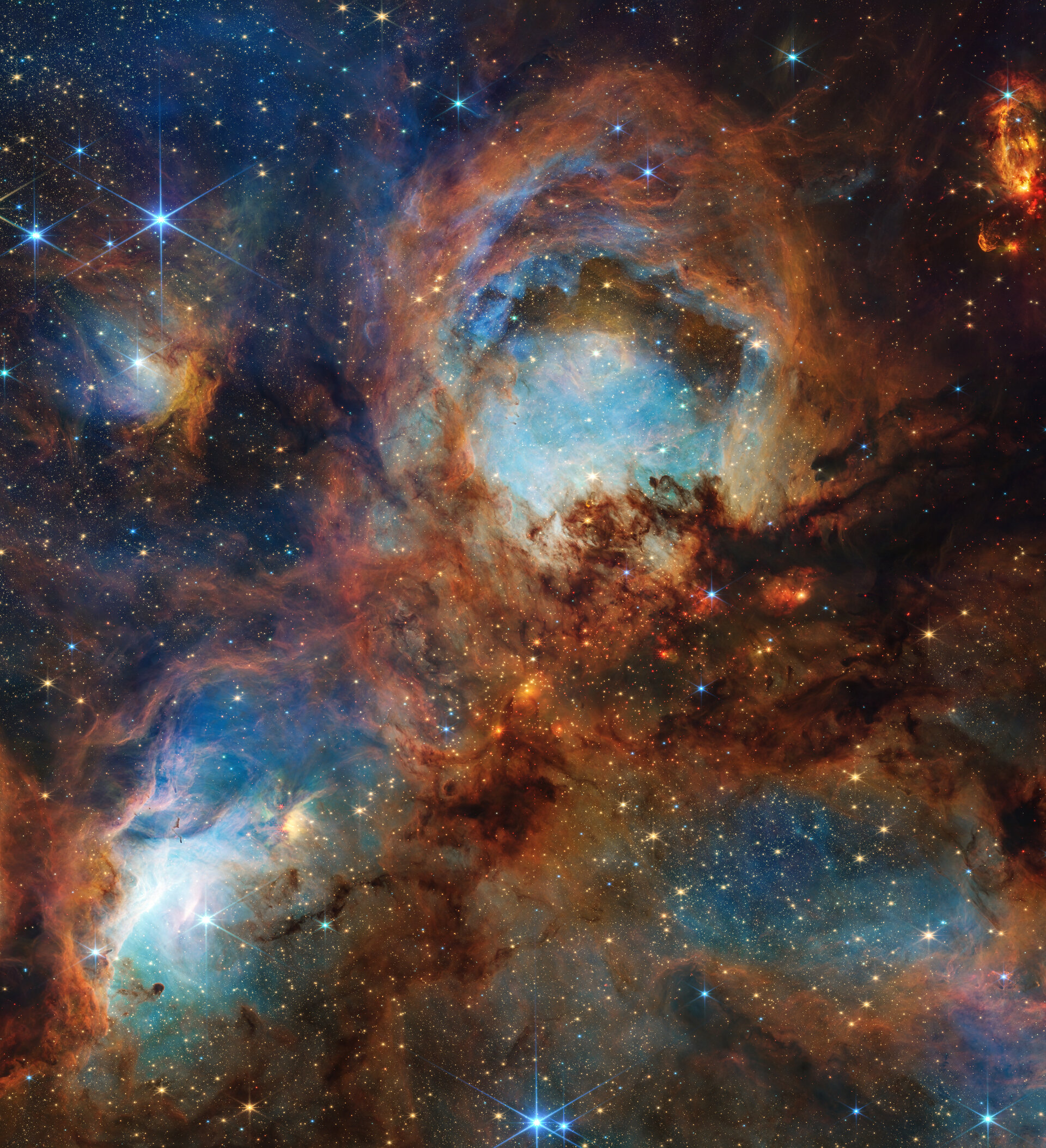Key Takeaways
- The James Webb Space Telescope provides new insights into the Cat’s Paw Nebula, a significant star-forming region.
- Webb’s near-infrared observations reveal intricate details of star formation processes and surrounding structures.
- The telescope has achieved remarkable scientific milestones in its third year, including discoveries related to exoplanets and distant galaxies.
Unveiling the Cat’s Paw Nebula
The James Webb Space Telescope, marking its third year of groundbreaking observations, has explored the Cat’s Paw Nebula (NGC 6334), a massive star-forming region located about 4,000 light-years away in the constellation Scorpius. Using its NIRCam instrument, Webb presents detailed near-infrared images that reveal new structural elements and features, enhancing understanding of the turbulent process from molecular clouds to star formation.
This nebula serves as a significant case study for astronomers, offering insight into the lifecycle of massive stars. Webb’s observations build on prior studies conducted by the Hubble and Spitzer Space Telescopes, showcasing how young, luminous stars are interacting with surrounding gas and dust. Their intense radiation creates bright nebulous glows, marking a transient phase in the nebula’s evolution, where active star formation eventually leads to a halt.
The nebula’s top-center region, often referred to as the ‘Opera House,’ features a striking circular structure. The primary source of its blue glow is likely from nearby bright yellowish stars. Below this area, a prominent yellow star, characterized by its diffraction spikes, is carving through its dust-laden environment, forming a compact shell of material.
Additionally, small fiery red regions amid the dust mark active sites of star formation, though they remain obscured. There is a clear distinction in brightness among the massive stars, influenced by the presence of intervening materials that impact light visibility. Many small yellow stars are spread throughout the scene, including areas that suggest the beginnings of new star formation, hinting at the continual cyclical nature of stellar evolution.
Alongside this star-forming activity, Webb has made significant advancements in its observational capabilities over the past year. Highlights include unexpected bright hydrogen emissions found in the distant galaxy GZ-z13-1, providing insights just 330 million years post-Big Bang. The telescope has also successfully captured direct images of exoplanets within the HR 8799 system, elucidating their formation, and identified a potential new exoplanet in the debris disc surrounding star TWA 7.
Notable discoveries also occurred closer to home, where astronomers observed Jupiter’s aurorae unfolding within a few hours. Webb’s imagery has contributed to better understandings of complex space phenomena, including a rare Einstein ring and the Sombrero Galaxy, highlighting the telescope’s unparalleled capacity to reveal new cosmic vistas.
As the largest and most advanced space telescope, Webb represents a collaboration between NASA, ESA, and the Canadian Space Agency (CSA). This partnership has facilitated significant technological advancements, enabling researchers to push the frontiers of astronomical science. With many more discoveries on the horizon, Webb continues to transform humanity’s understanding of the universe.
The content above is a summary. For more details, see the source article.














